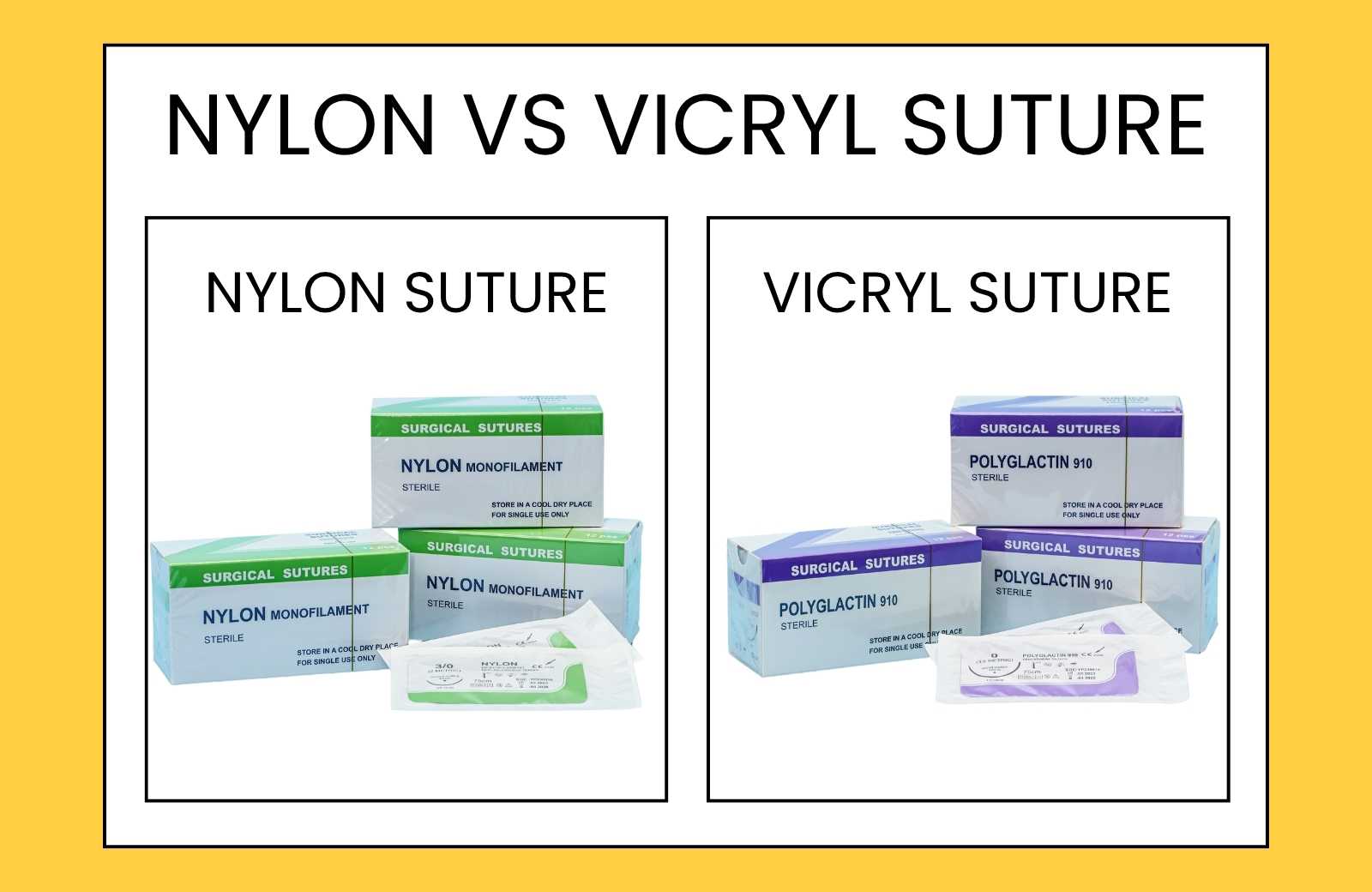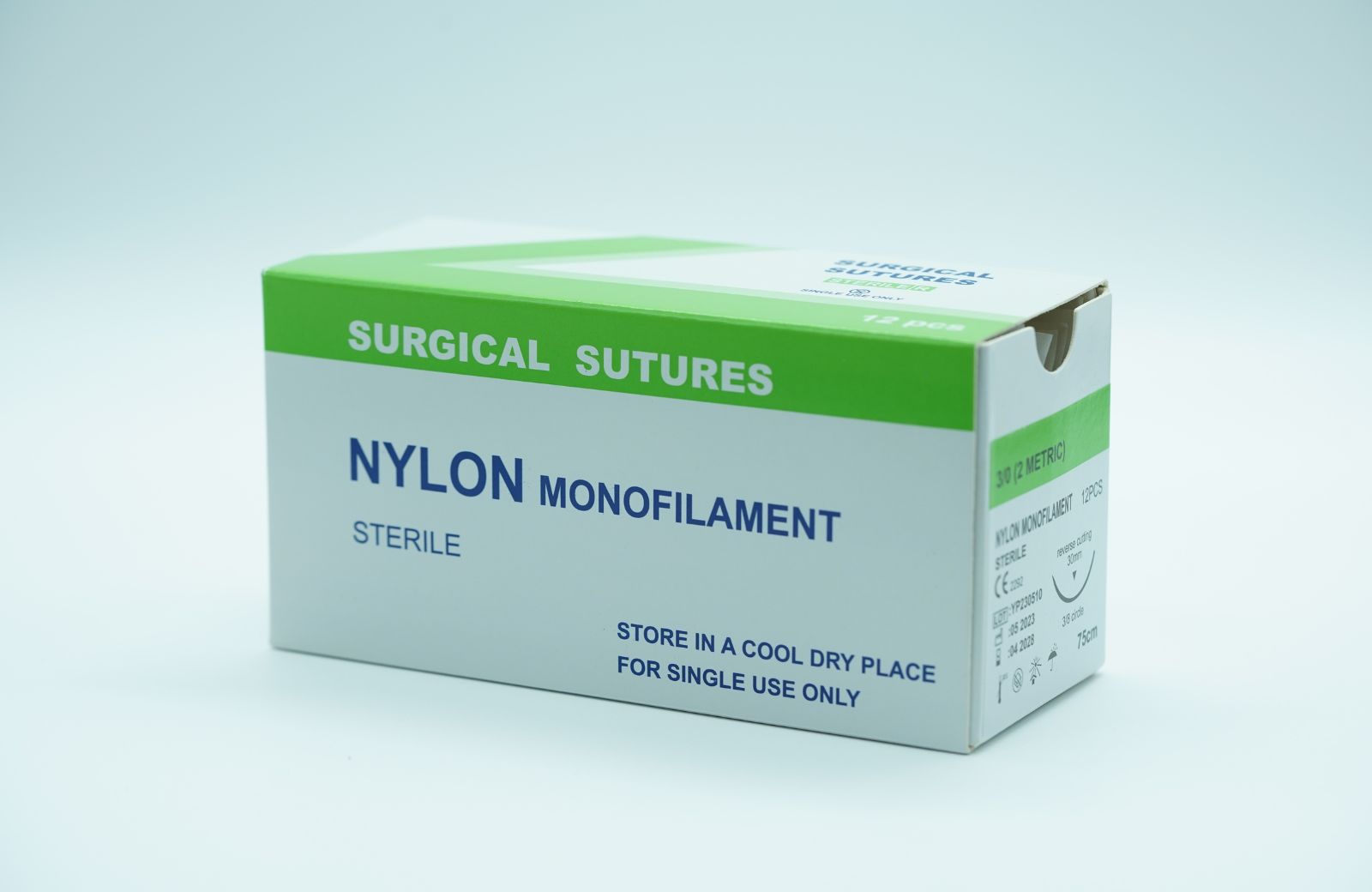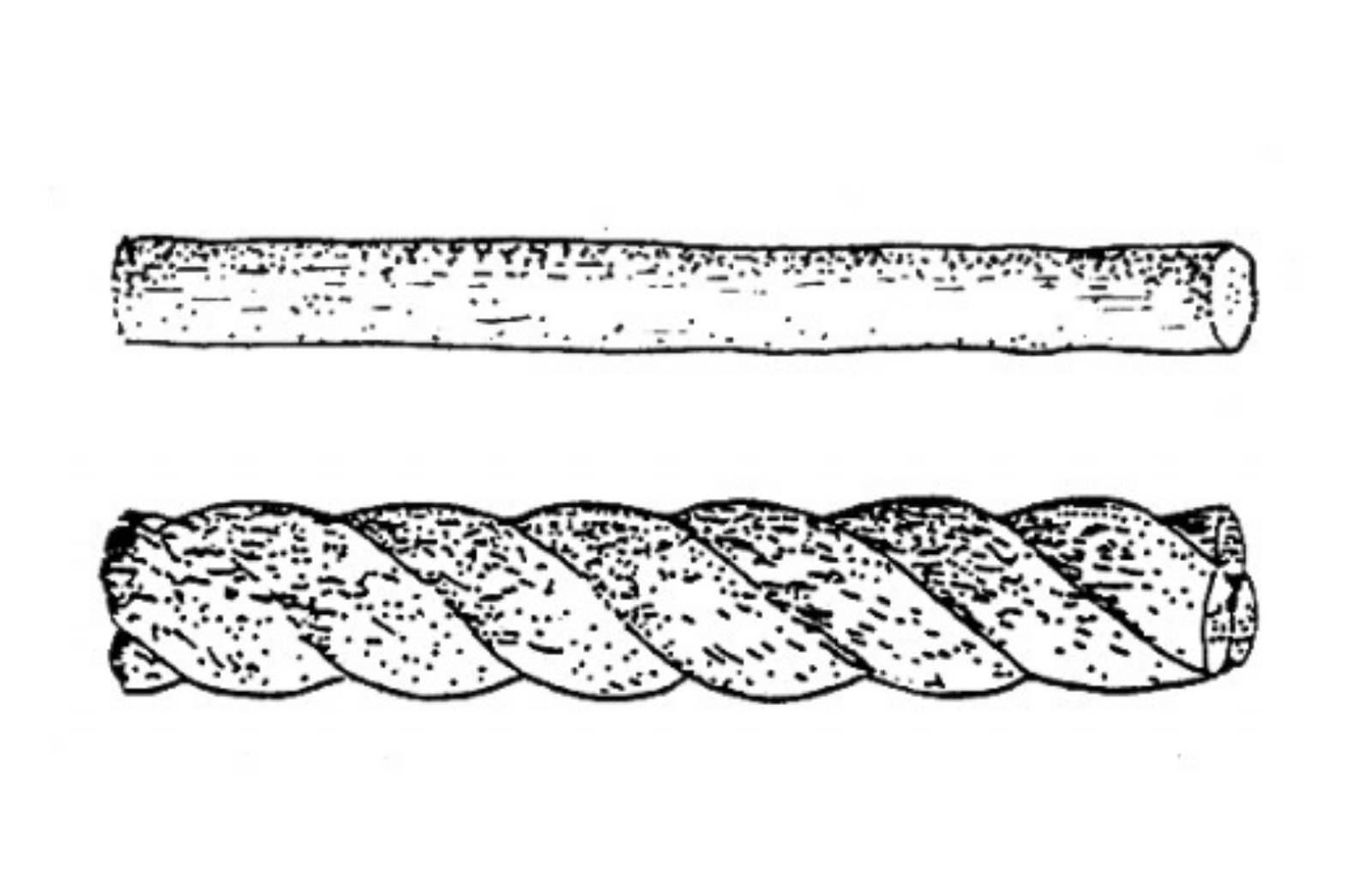 How Nylon vs Vicryl Suture Choices Impact Healing Outcomes
How Nylon vs Vicryl Suture Choices Impact Healing Outcomes
Surgical sutures play a crucial role in the healing process of wounds, and choosing the right type of suture can significantly influence healing outcomes. Two commonly used suture materials are nylon and Vicryl, each offering unique properties and benefits. Understanding how these differences affect healing can help surgeons make informed decisions tailored to individual patient needs.
Nylon Sutures: Characteristics and Applications
Nylon sutures are a popular choice due to their strength and versatility. Made from a synthetic polymer, nylon sutures are non-absorbable, meaning they need to be removed after the healing process is complete. This characteristic can be an advantage in certain types of surgeries, particularly in skin closures, where the suture needs to hold the tissue together until healing has progressed sufficiently.
However, while nylon sutures provide initial tensile strength, they can lead to delayed wound healing in some cases. This is primarily because non-absorbable sutures may induce a foreign body reaction, which can cause local inflammation. Such inflammation can compromise healing, especially in patients with underlying health issues or in anatomical locations prone to movement.
Vicryl Sutures: Benefits and Healing Factors
In contrast, Vicryl sutures are made from a braided synthetic material known as polyglactin 910. They are absorbable, meaning they break down naturally in the body over time, usually within two to three weeks. This quality eliminates the need for a follow-up visit for suture removal, making them particularly advantageous for internal structures or delicate tissues where minimal tension is required.
The absorbable nature of Vicryl allows for a more gradual tension release on the wound site, which can contribute to better healing outcomes. Studies have demonstrated that absorbable sutures like Vicryl support tissue healing without the risk of prolonged inflammation associated with non-absorbable materials. This is especially important in pediatric or geriatric populations, where minimizing trauma to the tissue can lead to significantly better recovery.
Comparative Healing Outcomes
When comparing nylon and Vicryl, several factors influence the overall healing outcomes. Research indicates that absorbable sutures tend to promote better tissue integration and lower rates of infection and complication compared to their non-absorbable counterparts. The choice of suture material also impacts the tissue’s inflammatory response, which can further affect healing.
Additionally, factors such as the type of tissue being sutured, the location of the wound, and the patient’s individual physiology should also guide the selection of nylon vs. Vicryl sutures. In straightforward skin closures where robust tensile strength is prioritized, nylon might be favored. In contrast, for deeper or more delicate tissue approximations where gentle handling is critical, Vicryl may provide superior healing properties.
Conclusion
In summary, the choice between nylon and Vicryl sutures is not merely about personal preference but has significant implications for patient healing outcomes. By understanding the unique characteristics of each suture type, healthcare professionals can tailor their approach to optimize healing, minimize complications, and enhance overall patient care.
 What You Need to Know About Nylon vs Vicryl Suture
What You Need to Know About Nylon vs Vicryl Suture
Sutures are a critical component of surgical procedures, as they are used to close wounds, support tissue healing, and minimize scarring. Among the various types of sutures available, nylon and Vicryl are two of the most commonly used materials. Understanding their properties, applications, and differences can help healthcare professionals make informed decisions regarding wound closure.
Overview of Nylon Sutures
Nylon sutures are synthetic monofilament materials made from polyamide. They are known for their high tensile strength, which allows them to withstand significant tension without breaking. One of the most appealing characteristics of nylon is its excellent elasticity, making it suitable for use in areas subject to movement, such as joints and muscles. Additionally, nylon sutures are non-absorbable, meaning they do not dissolve in the body and need to be removed after a certain period.
Nylon is particularly advantageous in cosmetic and plastic surgeries due to its minimal tissue reactivity and smooth surface, which can reduce the risk of infection and promote better healing. The most common forms of nylon sutures include braided and monofilament variations, with monofilament typically providing less drag and easier passage through tissue.
 Overview of Vicryl Sutures
Overview of Vicryl Sutures
Vicryl, on the other hand, is a braided, multifilament suture made from polyglycolic acid. One of the defining features of Vicryl is its absorbable nature, which means it gradually dissolves in the body over a period of time, eliminating the need for a second surgical procedure to remove the sutures. Vicryl sutures retain their tensile strength for up to two to three weeks before losing their effectiveness, making them ideal for internal tissue closure where subsequent removal is not feasible.
The braided structure of Vicryl allows for better knot security compared to nylon, which can slip if not tied securely. This makes Vicryl especially useful in surgical situations where reliable knot retention is crucial. In addition, Vicryl exhibits good handling characteristics, making it easier for surgeons to work with during procedures.
Key Differences Between Nylon and Vicryl Sutures
While both nylon and Vicryl serve as effective sutures, they differ significantly in several aspects:
- Absorbability: Nylon is a non-absorbable suture and requires removal, while Vicryl is absorbable and dissolves over time.
- Tensile Strength: Nylon has superior tensile strength, making it suitable for high-stress areas. Vicryl retains strength for a limited duration.
- Knot Security: The braided structure of Vicryl provides better knot security, whereas nylon can be prone to slippage.
- Indications: Nylon is often used in skin closures and plastic surgeries, while Vicryl is preferred for internal suturing where absorbability is advantageous.
Conclusion
Choosing between nylon and Vicryl sutures largely depends on the surgical context and the specific needs of the patient. Nylon sutures are ideal when high tensile strength or cosmetic outcomes are prioritized, whereas Vicryl sutures offer the convenience of non-removable closure. Understanding these differences ensures that healthcare professionals can select the most appropriate suture material for optimal healing and patient care.
Key Differences Between Nylon vs Vicryl Suture in Surgical Applications
Surgical sutures play a crucial role in wound closure and tissue repair. Among the various types of sutures available, Nylon and Vicryl are two commonly used materials, each with distinct properties and applications in surgical settings. Understanding the differences between these two sutures is essential for selecting the appropriate one for a specific procedure.
 1. Composition and Structure
1. Composition and Structure
Nylon sutures are synthetic monofilament materials made from polyamide, offering excellent tensile strength and minimal tissue reactivity. Their smooth surface allows for easy passage through tissue, making them ideal for various surgical applications. On the other hand, Vicryl sutures are made from a braided synthetic material called polyglactin 910. This multifilament structure provides a unique combination of strength and pliability, contributing to their suitability for soft tissue approximation and ligation.
2. Absorbability
One of the most significant differences between Nylon and Vicryl sutures lies in their absorbability. Nylon sutures are non-absorbable, meaning they do not dissolve in the body and may require removal after a certain period, depending on the site of use and healing process. Conversely, Vicryl sutures are absorbable, breaking down over time due to hydrolysis, which can be advantageous in reducing the need for a second surgical procedure to remove stitches.
3. Indications for Use
Due to their unique properties, Nylon sutures are often chosen for skin closure, tendon repair, and other applications where strength and durability are paramount. They are particularly useful in areas subject to high tension and movement, such as orthopedic and cardiovascular surgery. In contrast, Vicryl sutures are commonly used for internal tissue repair, such as in gastrointestinal, gynecological, and plastic surgeries, where absorbability provides a smoother healing process and minimizes patient discomfort.
4. Tension and Skin Elasticity
Nylon sutures exhibit excellent resistance to tension, which allows them to hold tissue securely in place. Their elasticity makes them suitable for closing areas subject to movement without risking the integrity of the repair. Vicryl, while also strong, has less tensile strength compared to Nylon, making it less suitable for high-tension closures. However, Vicryl’s pliability can be beneficial in situations requiring fine tissue approximation, such as in delicate reconstructive surgeries.
5. Tissue Reaction
Both Nylon and Vicryl sutures elicit a different biological response in surrounding tissues. Nylon, being non-absorbable, can provoke a prolonged inflammatory response, often resulting in more fibrous tissue formation around the suture line. This can be beneficial or detrimental, depending on the surgical context. Vicryl, on the other hand, is designed for minimal tissue reactivity, reducing the risk of scarring and adhering to surrounding tissues.
Conclusion
In summary, the choice between Nylon and Vicryl sutures depends on various factors, including the surgical site, desired absorbability, and the specific healing requirements of the patient. Nylon’s durability makes it the preferred choice for high-tension areas, while Vicryl’s absorbable nature is advantageous for internal repairs and minimizing post-operative complications. Surgeons must evaluate these differences carefully to ensure optimal outcomes in surgical procedures.
 Pros and Cons of Using Nylon vs Vicryl Suture in Wound Closure
Pros and Cons of Using Nylon vs Vicryl Suture in Wound Closure
Introduction
Wound closure is an essential part of surgical and injury management, and the choice of suture material plays a crucial role in healing and outcome. Two common suture materials are Nylon and Vicryl, each with its own set of advantages and disadvantages. Understanding these can help healthcare professionals make informed decisions based on specific clinical scenarios.
Pros of Using Nylon Suture
- Durability: Nylon sutures are known for their high tensile strength and resistance to stretching, making them ideal for closing skin and other high-tension wounds.
- Non-Absorbable: As a non-absorbable material, Nylon provides sustained support for wounds without the risk of the suture breaking down or needing to be replaced over time.
- Minimal Tissue Reaction: Nylon typically elicitis a minimal inflammatory response, which can lead to less scarring and improved healing outcomes.
- Versatility: Nylon is available in various sizes and types (monofilament and multifilament), allowing for a range of applications from skin closure to deeper tissue suturing.
- Ease of Handling: Nylon sutures are often easier to handle and tie securely, which can benefit the speed and efficiency of surgical procedures.
Cons of Using Nylon Suture
- Poor Knot Security: Compared to some other suture materials, Nylon can be prone to slipping knots, necessitating careful knot-tying techniques.
- Potential for Infection: Being a non-absorbable suture, Nylon must be removed after a period, which may increase the risk of infection if the suture is not adequately cared for.
- Risk of Foreign Body Reaction: In some cases, body tissues can react negatively to Nylon, causing complications in some patients.
Pros of Using Vicryl Suture
- Absorbable Material: Vicryl is a synthetic absorbable suture material, meaning it is gradually broken down by the body, eliminating the need for removal and reducing the risk of infection.
- Good Knot Security: Vicryl generally offers excellent knot security, which can be essential in maintaining wound closure during the healing process.
- Less Tissue Reaction: As it is designed to be absorbed, Vicryl often elicits a lesser tissue response compared to non-absorbable sutures, which can lead to better cosmetic outcomes.
- Versatile Usage: It can be used in various tissues, including soft tissue approximations, subcuticular closures, and much more.
Cons of Using Vicryl Suture
- Loss of Tensile Strength: Although Vicryl offers initial strength, it loses tensile strength over time, which may not be suitable for high-tension areas.
- Delayed Absorption: The absorption process of Vicryl can take several weeks, which may not be ideal for all types of wounds or patients.
- Cost Considerations: Vicryl sutures can be more expensive than Nylon. This may be a consideration in resource-limited settings.
Conclusion
Choosing between Nylon and Vicryl sutures depends on various factors, including the type of wound, patient characteristics, and desired outcomes. Understanding the pros and cons of each material can guide healthcare professionals in selecting the most appropriate suture for optimal wound closure.

